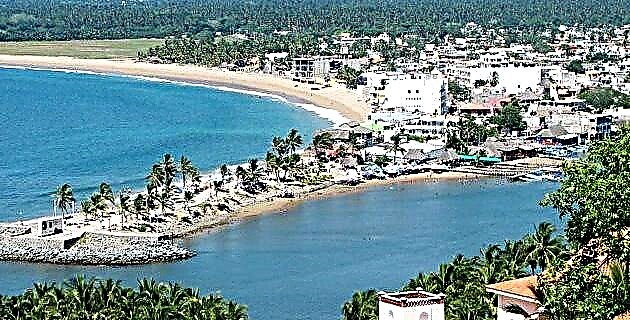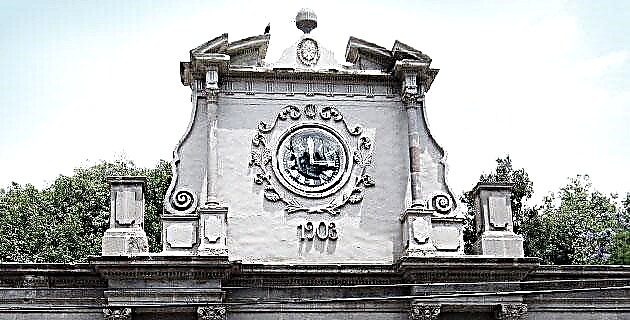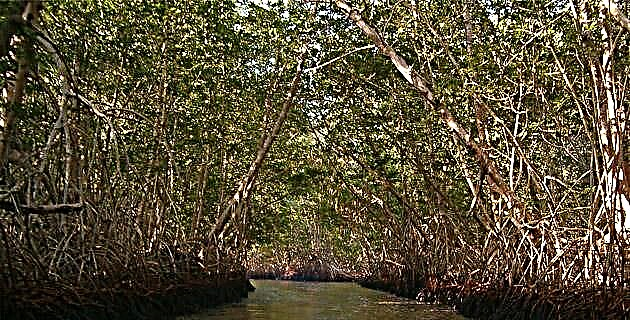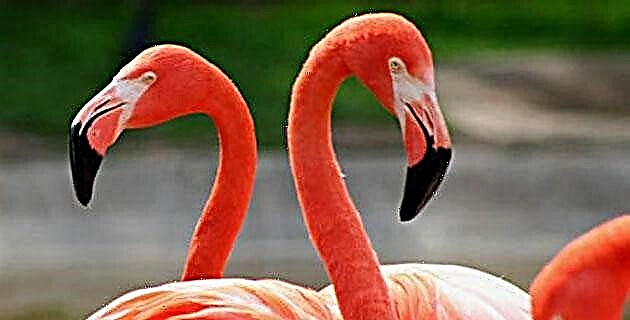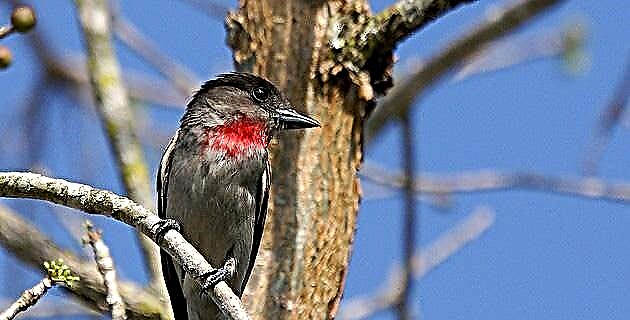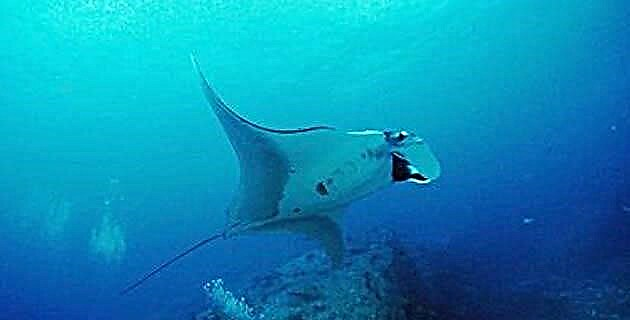
The Europeans who sailed for the first time in the waters of the Bermejo Sea were dazzled by the scenery they encountered in their path; it is understandable that they imagined as an island what was actually a peninsula.
They drove their ships and observed small islets that were nothing but the ridges of mountain ranges and seamounts that emerged millions of years ago in the gulf until they surpassed sea level and found sunlight. It is not difficult to imagine, in those days, the jump of the dolphins celebrating the arrival of the intruders and the families of surprised whales watching the visitors.
The Europeans who sailed for the first time in the waters of the Bermejo Sea were dazzled by the scenery they encountered in their path; it is understandable that they imagined as an island what was actually a peninsula. They drove their ships and observed small islets that were nothing but the ridges of mountain ranges and seamounts that emerged millions of years ago in the gulf until they surpassed sea level and found the sunlight. It is not difficult to imagine, in those days, the jump of the dolphins celebrating the arrival of the intruders and the families of surprised whales watching the visitors.
These islands, populated by aerial, marine and terrestrial inhabitants appeared, before the eyes of the expeditionaries, majestic and solitary on the southern coast of the peninsula crowned by the Sierra de La Giganta.
Perhaps it was a chance or a deviant turn of the wheel that guided the courteous men who were looking for another route to the mouth of the gulf; As time went by, the travels continued, the expeditions followed one after another, the new continent appeared on the maps and on them the “island” of California accompanied by their younger sisters.
In 1539, an expedition supported by Hernán Cortés and under the command of Francisco de Ulloa arrived perfectly equipped to the mouth of the Colorado River. This gave rise, a century later, to a change in the world cartography of the time: it was indeed a peninsula and not of the time: it was indeed a peninsula and not an island portion, as they had previously imagined.
The pearl banks discovered near the port of Santa Cruz, today La Paz, and perhaps the exaggeration - common denominator of many of the chronicles written during the conquest - unleashed the ambition of new adventurers.
The colonization of Sonora and Sinaloa in the middle of the seventeenth century and the founding of the mission of Loreto in 1697 in the south of the peninsula mark the beginning of great centuries.
Not only the natural environment suffered the onslaught of the new settlers, also the Pericúes and Cochimíes, autochthonous inhabitants, were decimated by diseases; In it, the Yaquis and Seris were reduced to the maximum those territories in which they moved freely.
But in the second half of the 19th century and the first half of the 20th, technology multiplies the strength of man: fishing, large-scale agriculture and mining developed. The flows of rivers such as the Colorado, Yaqui, Mayo and Fuerte, among others, stopped nourishing the waters of the gulf and then the animals and plants, involved in a complex food chain at times imperceptible, resisted the effects.
What happened to the islands in the southern Sea of Cortez? They were also affected. The guano deposited by birds over thousands of years was taken to other lands to serve as fertilizer; the gold mines and the salt flats were exploited, which over time proved unprofitable; many marine species such as the vaquita went among the trawl nets; the islands were left with some perhaps irreparable damage and with fewer neighbors at sea.
As watchmen unveiled in a beautiful landscape, the islands saw for many years the passage of steamships, which during the past century made the journey from San Francisco, California, and entered the United States after crossing the waters of the Colorado River; they remained immutable in front of the fishing boats and their trawl nets; they were witnesses day after day of the disappearance of many species.
But they were still there and with them their old and stubborn tenants who resisted not only the passage of time but also the climatic changes of the earth and, above all, the excessive action of those who could have always been their friends: men.
What do we find when making a trip by sea from Puerto Escondido, in the municipality of Loreto, to the port of La Paz, almost at the end of the peninsula? What appears before us is an extraordinary panorama, a truly compelling experience. To the natural beauty of a sea cut out by the outlines of the coast and the capricious forms of the islands are added the visits of dolphins, whales, birds of fragile structure and delicate flight, as well as pelicans in search of food. The noise emitted by the sea lions is moving, as they huddle against each other glistening in the sun and bathed by the water that breaks on the rocks.
The most observant will appreciate the shape of the islands on the map and their edges on land; the transparent beaches and bay, only equaled by those of the Caribbean; the textures on the rocks that reveal the age of our planet.
Specialists in endemic plants and animals will see a cactus there, a reptile, a mamilaria, a black hare, in short: biznagas, swallows, iguanas, lizards, snakes, rattlesnakes, mice, herons, hawks, pelicans and more.
Divers will enjoy the most beautiful underwater landscapes and unique species, ranging from giant squid to natural fractals of starfish; sport fishermen will find sailfish and marlin; and photographers, the ability to capture the best images. The space is ideal for those who have ever wanted to be immensely alone or for those who want to share with their loved ones the experience of knowing a strip of sea that, despite the ravages, it seems that no one has ever touched it.
The islands Coronado, El Carmen, Danzante, Monserrat, Santa Catalina, Santa Cruz, San José, San Francisco, Partida, Espíritu Santo and Cerralvo are a constellation of land that must be conserved for the good of nature and the privilege of sight.
Each of them has peculiar attractions: nobody will be able to forget the beach on the island of Monserrat; the imposing presence of Danzante; the great bay in San Francisco; the estuaries and mangroves in San José; the mirror of the sun over the island of El Carmen, a breeding center for the bighorn sheep; the unmistakable image of Los Candeleros and the extraordinary spectacle on the islands of Partida or Espíritu Santo, whether the tide is high or low, as well as the fabulous sunsets that can only be seen in the Sea of Cortez.
Everything that can be said and done to conserve this portion of our territory is little. We must be certain that the future of the islands in the southern Sea of Cortez will depend on conceiving this place as a great observatory of nature that any visitor can look at as long as it does not affect its beautiful surroundings.
THE FARALLÓN OF ISLA PARTIDA: A FASCINATING SEA HAVEN
The Partida Island cliff is an exceptional wildlife refuge: it has a varied population of aquatic birds.
Booby birds nest in the hollows of the cliffs, and are seen jealously brooding their eggs, males and females taking turns in search of food. It is nice to observe them very still, with their blue legs, their brown plumage like a sack and their white head with an expression of "I didn't go. Seagulls abound and often stand on the edge of the abyss, looking out to sea in search of schools of fish; Another of his favorite places is the apex of the cacti that, from so much excrement, seem snowy. Frigate birds fly high up, with their typical silhouette of long pointed wings, similar to bats. Pelicans prefer the rocks on the seashore and go from dip to dip looking for food. There are also cormorants and even a couple of magpies, probably stowaways on a tourist yacht.
The main attraction of the cliff are the colonies of sea lions.
In the fall, biologists from the University of Baja California Sur conduct a census to record population growth.
Many of the wolves only come here to mate and have their young; the colony is established primarily in the wolfholes, although the youngest specimens occupy any rock that they can climb, at the foot of the cliffs. They cause great scandal with their courtships and lawsuits; the ruckus lasts all day.
During the mating season, the males delimit their territories, which they defend with great zeal; there they maintain a harem of various females.
Only the mainland is disputed, since the sea is considered communal property. Fights between dominant males are frequent, and there is no lack of the female who, seduced by another gallant, flees from the harem. The strongest males are impressive, especially when they are enraged and growl loudly to intimidate anyone who dares to enter their domain. Despite their flabby and lazy appearance, they can travel at speeds of more than 15 km per hour in their attacks to scare off an opponent.
Under the sea there is a different world, but just as fascinating.
Large schools of sardines swim shallow; their small spindle-shaped bodies gleam silver. There are also multi-colored fish and some suspicious moray eels, with a terrible aspect. Sometimes you see stingrays that "fly" silently until they get lost in the depth of the ocean, leaving us with the sensation of living a strange dream in slow motion.
Source: Unknown Mexico No. 251 / January 1998

